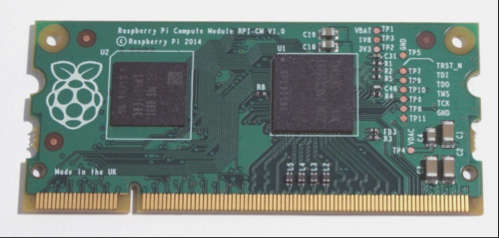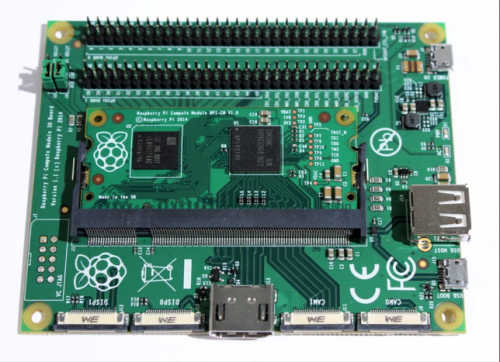| Raspberry Pi Goes Commercial |
| Written by Harry Fairhead |
| Saturday, 12 April 2014 |
|
There is a new Raspberry Pi in town, the Raspberry Pi Compute Module, but in principle it isn't that different from the old one. What is going on? The new Pi has a form factor that makes it much more difficult for experimenters to work with, but which makes it ideal for building into other devices. What the Raspberry Pi Foundation seems to be hoping for is that serious system builders will embed the Pi inside devices that are commercially available. For example, your next washing machine could have a Raspberry Pi controller behind the front panel. The reason for this shift is that the non-profit foundation thinks that it might be a good way to get some extra funds that it can spend on making more educational effort. Notice that this implies that it is making a profit on selling the new form factor.
The new Raspberry Pi is packaged as a DDR2 SODIM board which fits into a standard SODIM connector. In other words, it is a Raspberry Pi that looks like the smallest of standard memory modules. Just make sure you don't try plugging it into a standard connector, however, because this is not some sort of co-processor. The pin-outs are very different to a memory module and to make use of the device you are going to have to design your own PCB that accepts it via the SODIM socket. This is tough if you are an experimenter, but the sort of thing you do on a regular basis if you are working in industry creating embedded control hardware. As long as you can gain access to the new board's pins, then you do get all of the functionality of a standard R Pi and more. It has 512Bytes of RAM and a 4GByte Flash which acts like the standard SD card, but you can't remove it and plug in a new one. The BCM2835 SoC has more of its pins decoded and brought to the connect and this means more GPIO connections. While the Compute Device is intended for use with custom motherboards there is also a standard Compute Module IO board which can be used to get thing started. You can use the Compute Device and the the I/O board to prototype systems before moving on to the design of the custom hardware. The I/O board makes the HDMI, USB and all the other connections easy to get at. You can see a short demonstration in the following video:
If you want to get your hands on one then you are going to have to wait for a while, but they should be available from RS Components or element14 some time in June. Initially they are expected cost $30 for the pair for batches of 100 and slightly more for one-offs. For the price it seems like a good deal.
The I/O module is 100% open source but the Compute Module has some proprietary software due to Broadcom not wanting you to know how its GPU works. You can download the hardware schematics, however, right now.
So what effect will this new board have? The first thing to say is that with so many people knowing the original Raspberry Pi there is a pool of talented engineers whose first thoughts, if they move into industry, is to use a Raspberry Pi - and this module make that a realistic idea. It makes sense for educational equipment to have an industrial equivalent and there is a lot of synergy to take advantage of. From the advanced experimenter's point of view it also opens up new opportunities. People have already built super computers using multiple Raspberry Pis in custom housings, but with a little PCB design skill you could build a much bigger grid machine in a much smaller space. It also opens up the possibility of creating real products by migrating designs from existing Raspberry Pi hardware onto more professional units built using the Compute Module. It all sounds very sensible. More InformationRelated ArticlesIs This What It Now Means To Build A Computer? Buy A Pi For $25 And Get Mathematica Free Raspberry Pi To Star In Class? Raspberry Pi Gets A $25 Camera Web IDE The Easiest Way To Program Raspberry Pi Raspberry Pi Educational Manual Released Raspberry Pi Gets An App Store Raspberry Pi or Programming - What shall we teach the children?
To be informed about new articles on I Programmer, install the I Programmer Toolbar, subscribe to the RSS feed, follow us on, Twitter, Facebook, Google+ or Linkedin, or sign up for our weekly newsletter.
Comments
or email your comment to: comments@i-programmer.info
|
| Last Updated ( Saturday, 12 April 2014 ) |



